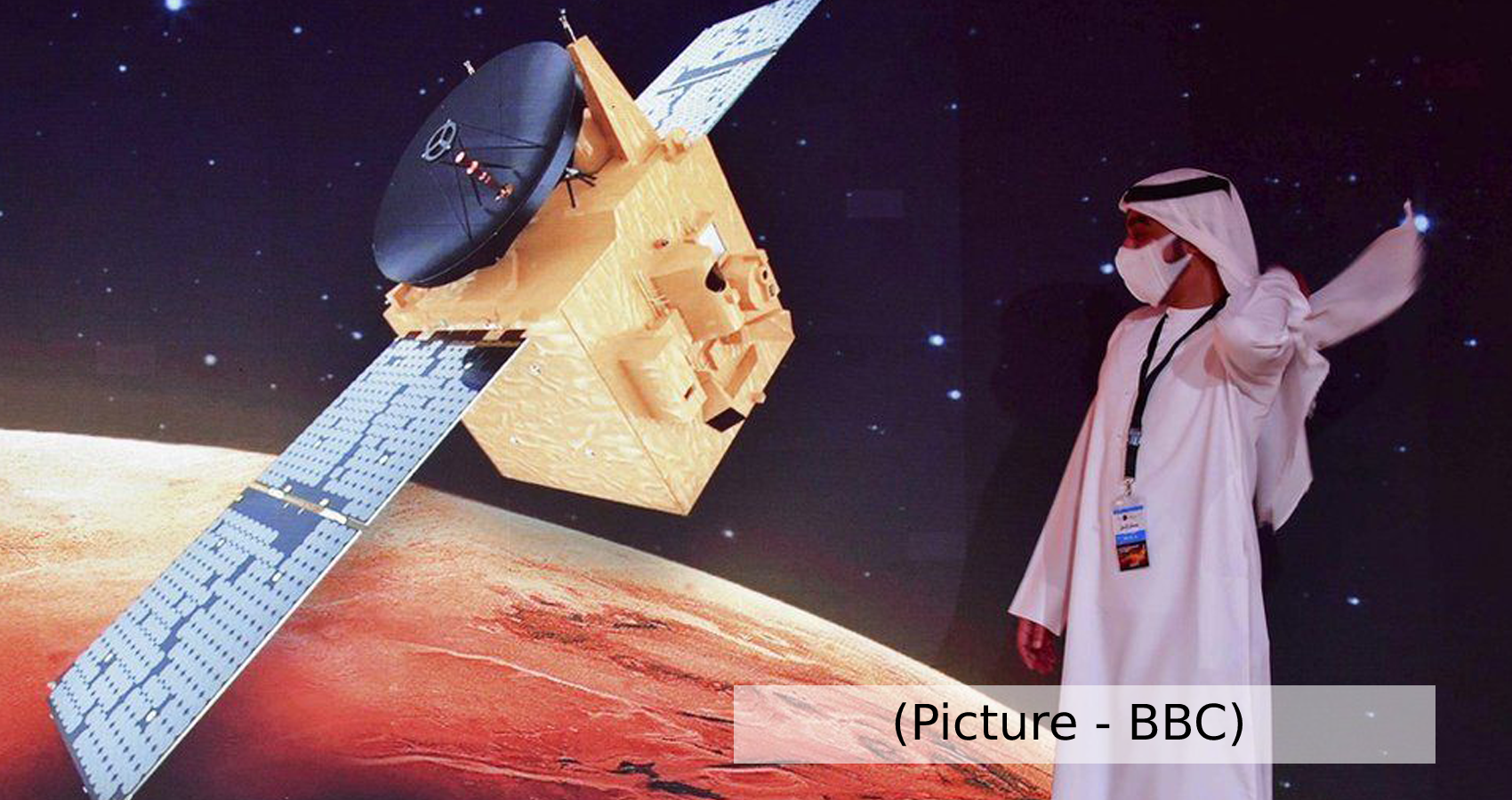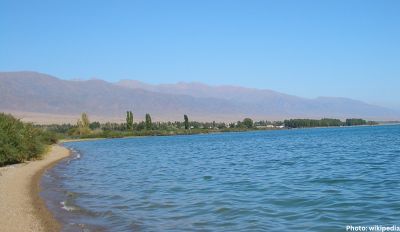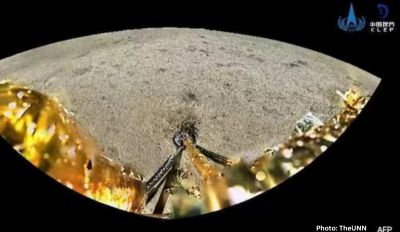The UAE has become the fifth country after the US, Russia, China, the EU, and India, to reach the Martian orbit. The primary objective of the mission is to study Martian weather dynamics.
The United Arab Emirates’ first mission to Mars entered the orbit of the red planet on Tuesday, seven months after the Emirati-built ‘Hope Probe’ was launched from Tanegashima in Japan. With this, the UAE has become the fifth country after the US, Russia, China, the EU, and India, to reach the Martian orbit.
Relieved ground controllers at the UAE’s space station in Dubai broke into applause after the unmanned spacecraft called ‘Al-Amal’ — the Arabic word for hope — executed a ‘burn’ on its braking engines to reduce speed and successfully slipped into Mars’ gravity.
“What you have accomplished is an honour for you, and an honour for the nation. I want to congratulate you,” said Abu Dhabi Crown Prince Sheikh Mohammed bin Zayed after entering the control room, AFP reported. The historic event was timed to coincide with the 50th anniversary of the unification of the UAE’s seven emirates.
What is the UAE’s Hope Probe?
First announced in July 2014, the Emirates Mars Mission was developed and operated by the Mohammed Bin Rashid Space Centre in collaboration with the University California, Berkeley, Arizona State University and the University of Colorado-Boulder in the United States.
In July 2020, it was launched from the Tanegashima Space Centre in Japan aboard a Mitsubishi Heavy Industries’ H-II A rocket and its launch became the 45th for H-II A. Carrying three instruments, including a high-resolution camera and a spectrometer, the spacecraft is on an orbital mission to collect data on Martian climate dynamics and help scientists understand why Mars’s atmosphere is decaying into space.
Hope is the UAE’s fourth space mission and first interplanetary one. The previous three were all Earth-observation satellites. Once it is successfully able to reach the planet, it will start orbiting the planet. Its overall mission life is one Martian year, which is about 687 days on Earth.
The mission is one of three launched to Mars from Earth in July. The other two — China’s Tianwen-1 dual orbiter-rover and Perseverance from NASA — are expected to reach the red planet later this month. While Hope was the first to arrive, Tianwen-1 will reach on February 10, followed by Perseverance on February 18.
he timing of the mission is crucial as it was launched at a time when Earth and Mars were aligned at their closest points around the Sun, the Verge reported.
What is the objective of the mission?
The primary objective of the mission is to study Martian weather dynamics. By correlating the lower atmosphere and upper atmosphere conditions, the probe will look into how weather changes the escape of hydrogen and oxygen into space.
By measuring how much hydrogen and oxygen is spilling into space, scientists will be able to look into why Mars lost so much of its early atmosphere and liquid water. Over the next two months, the spacecraft will continue to move into its final orbital position — around 20,000-43,000 kilometres about the planet. The distance is calculated in a way that allows the craft to use all three instruments to capture a complete view of the Martian atmosphere every nine days for the next two years.
It is expected to create the first complete portrait of the planet’s atmosphere. With the information gathered during the mission, scientists will have a better understanding of the climate dynamics of different layers of Mars’ atmosphere.
Al-Amal will be the first “true weather satellite” orbiting around the planet. But the UAE also wants the mission to inspire the country’s youth to take up careers in the sciences. The government also hopes that the mission will boost the UAE’s science and technology sector.











